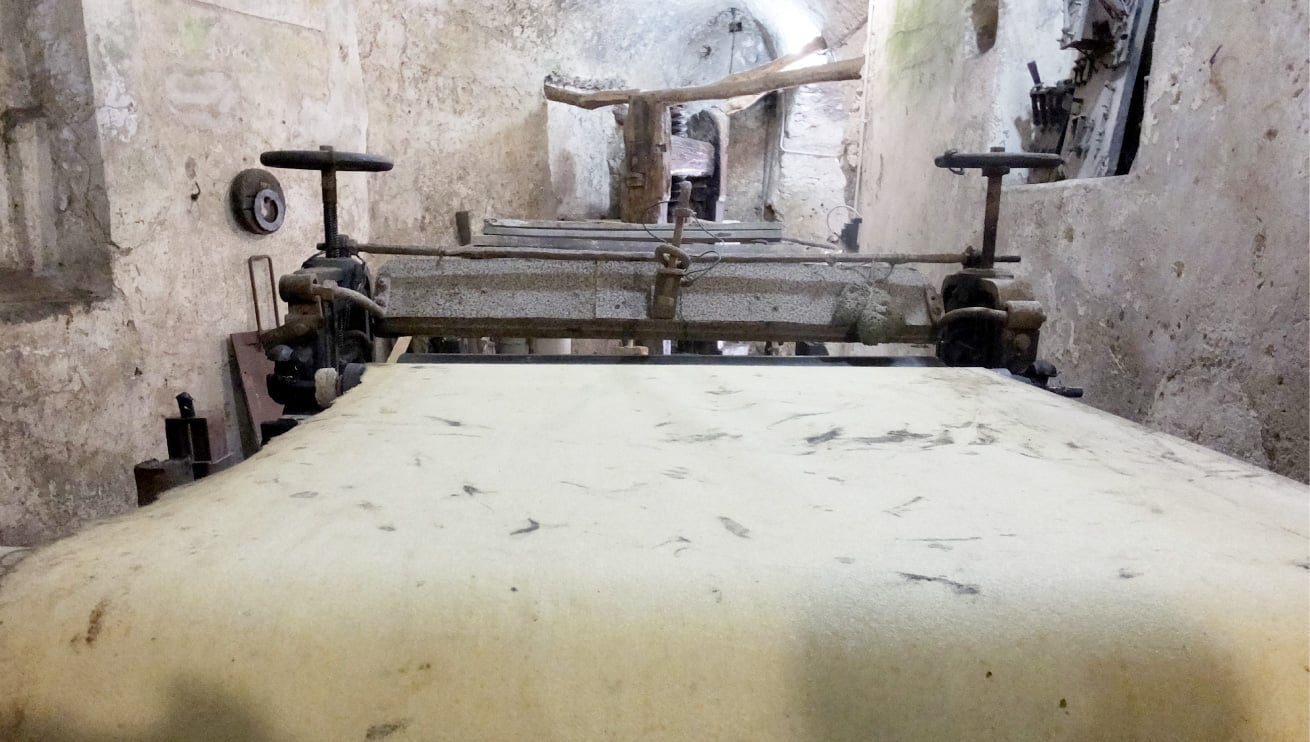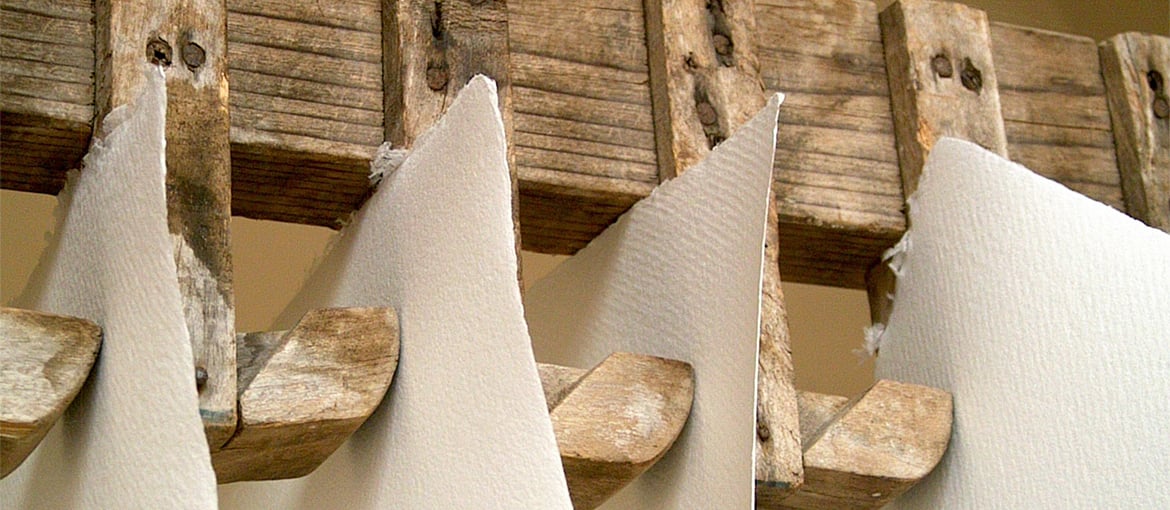Table of Contents
Paper was invented in China and no, it wasn’t good old Marco Polo who brought it back to Europeans, but the Arabs. In Europe, the first paper mills appeared in Arab-ruled Sicily and Spain, followed at the end of the 13th century by a small town at the foot of the Apennines, in what is today the Italian region of Marche. A town that would become famous for its paper across the world: Fabriano.
It’s here that the story of paper as we know it today began: it’s a tale of technologies, inventions — some born of genius, others pure chance — rivalries, trade and… lots and lots of water. The mountain-river water needed to move the heavy machinery which was constantly at work in the paper mills.
In Italy, there are still places which tell this fascinating tale of technology and craftsmanship: paper museums. We’ve picked some of the best for this summer tour that runs from enterprising Fabriano to the seafaring centres of Amalfi and Genoa, to the “countryside” of Venice and the Pope’s old paper mills in Ascoli Piceno… enjoy!
The Fabriano Paper and Watermark Museum

We’re in the hinterland of the Marche, 45 miles from the Adriatic coast. It’s here in Fabriano that master papermakers perfected Arab manufacturing techniques, making paper quicker and cheaper to produce.
Fabriano’s Paper and Watermark Museum – the only one of its kind in Europe – is housed in a former Dominican convent. On entering its spacious premises, visitors encounter a reproduction of the medieval Fabrianese paper mill: the system of machines and technologies which, for centuries, were used to make the much sought-after Fabriano paper. Seeing the hammer mills in action, shredding rags to be turned into paper, is impressive.
Tip: take the guided tour for fascinating, passionately told anecdotes.
The Amalfi Paper Museum

We now move to the southernmost of Italy’s old maritime republics: Amalfi. Nestled between the mountains and the sea, Amalfi realised the importance of being self-sufficient in paper. This heritage is celebrated by the Amalfi Paper Museum.
The museum lies in the old paper mill, which dates back to the 14th century. Inside, you can see many of the paper-making technologies used over the centuries in action. The machinery is powered by water from the nearby Canneto river. Among the working technologies on display are Hollander beaters: these machines – which were cheaper and more efficient to run – would in the 1600s replace the stamp mills invented by the Fabrianese.
For the amateur bibliologists among you, we recommend checking out the fonts, texts and maps in the museum’s library.
The Paper Mill Valley

Time to head back up north. As usual, we find ourselves near a river, this time the Toscolano. But rather than the sea, this one drains into Lake Garda. We’re in the Valle delle Cartiere (Paper Mill Valley), in the province of Brescia. Here, between the 15th and 16th centuries, they worked flat out to supply paper to one of the great powers of the era: the Republic of Venice.
The Toscolano Maderno Paper Museum recounts the history of paper making, from early printing and books, through the middle ages, right up to the end of the 20th century. Not to be missed are the archaeological finds from other parts of the valley and the printed volumes from the first half of the 1500s.
Also, take a look at the annual programme of workshops and at current exhibitions.
The Mele Paper Museum

Once again, we’re in an old maritime republic: Genoa. The river that powered this paper mill is the Leira, turning the drive wheels non-stop back in the day.
The Mele Paper Museum has preserved its historic paper-making machinery in the very same place where it worked for centuries. Multimedia experiences provide visitors with fascinating insights into both craft and industrial paper production processes.
Before you go, don’t forget to browse the bookshop, where you’ll find paper products that are still hand-made, as they were in Renaissance times.
The Papal Paper Mills of Ascoli Piceno

We conclude our tour back where we started: in the Marche. We’ve followed the Apennines a couple of hours south of Fabriano to Ascoli Piceno. Here too, there’s a river – the Castellano – and here too there once was a centre of power: the papacy. The museum’s home is the renovated historic Papal Paper Mill, a veritable Renaissance manufacturing centre. On display are machines from the 18th-century mill and reconstructions of the old millstones from nearby Porta Cartara.
The museum’s other exhibition sites are also worth visiting, including the permanent interactive exhibition “Tutta l’Acqua del Mondo” (All the Water in the World). Water, as we’ve seen, was essential for paper making.

